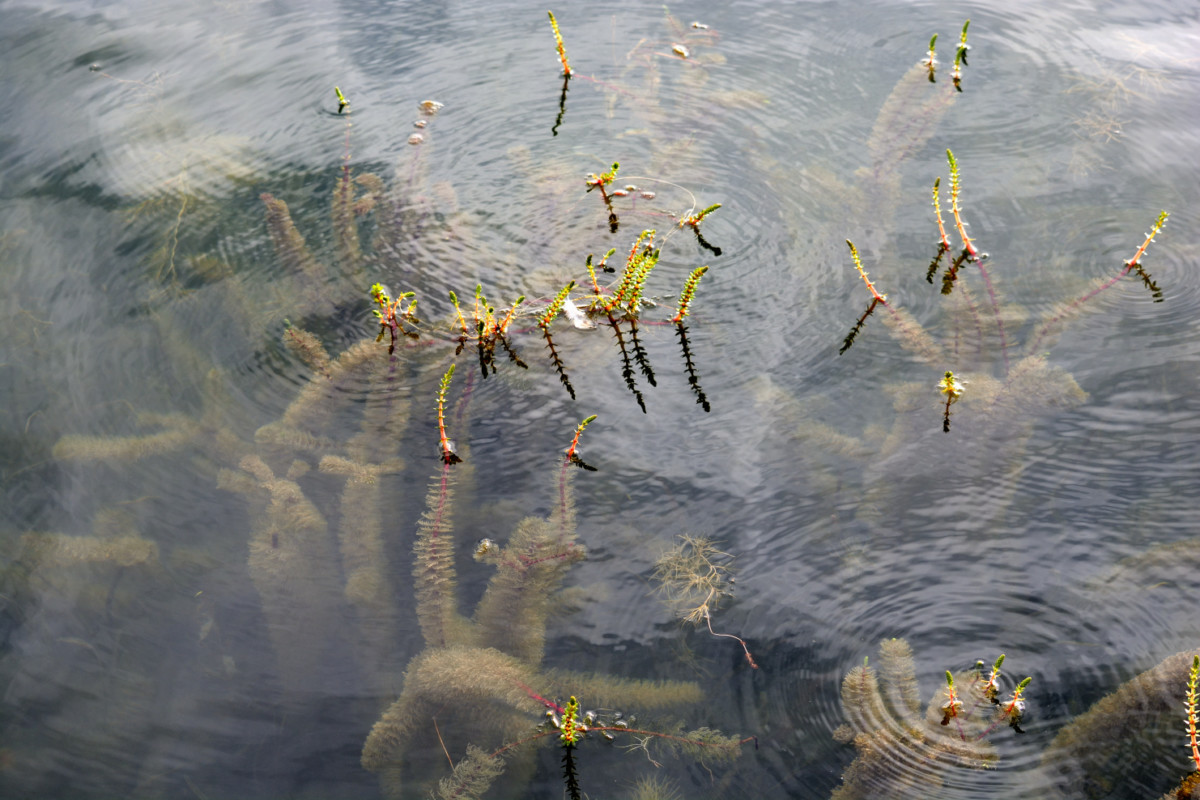Treatment for invasive weeds will likely take place in May. According to PLM’s Steve Hanson, he anticipates treatment the week of May 13th.
 The treatment will occur when PLM detects optimal conditions, which are weather dependent. They will look for a pronounced thermocline. This is where a layer of warmer water develops in the top 10 to 20 feet. The temperature difference between the warmer surface water, and the colder deeper water, limits the exchange of material between the two layers. PLM’s Steve Hanson notes “by waiting for the thermocline to develop before treatment, we can keep the majority of the product in the upper layer of water” where it will attack the HEWM. He adds PLM has checked for thermocline, but the weather has been windy and cool. The next check will take place toward the end of next week.
The treatment will occur when PLM detects optimal conditions, which are weather dependent. They will look for a pronounced thermocline. This is where a layer of warmer water develops in the top 10 to 20 feet. The temperature difference between the warmer surface water, and the colder deeper water, limits the exchange of material between the two layers. PLM’s Steve Hanson notes “by waiting for the thermocline to develop before treatment, we can keep the majority of the product in the upper layer of water” where it will attack the HEWM. He adds PLM has checked for thermocline, but the weather has been windy and cool. The next check will take place toward the end of next week.
A notice has gone out to property owners listing the treatment products. It will be followed by a posting on lake shore properties prior to the treatment. Two products listed are Fluridone and Triclopyr. Fluridone is expected to take out the HEWM, and the Triclopyr is on the notice in case some HEWM persists at the end of the summer. The manufacturer of the products, SePRO, will cover the cost of the Triclopyr to treat any spots if required. Copper is also on the notice of no-restriction products, and will be used if any Starry Stonewort is found. Some lakes have been over run by Starry Stonewort. If it shows up, the best solution is to treat it quickly.
About the restrictions, Steve Hanson offers these thoughts, as they could be misleading. “There are actually no irrigation restrictions (except for grass seedlings) at concentrations of 10 ppb or less. We are targeting 6 ppb. The grass seedling restriction goes away at 5 ppb. People will see the 30-day restriction and be concerned understandably.” He adds, “at the target concentrations there are no irrigation restrictions for established lawns or ornamentals.” Regarding the effect on fish, Steve Hanson notes “There are no restrictions regarding fishing or fish consumption associated with the use of Fluridone. Fluridone, or any herbicide permitted in Michigan, does not bio-accumulate in the fatty tissue or muscles of fish or other aquatic organisms.”
When invasive weeds showed up in Clark Lake, the community took up the fight. Lakefront property owners petitioned Columbia Township to established a special assessment district (SAD) so that the hybrid Eurasian water milfoil (HEWM) could be eliminated wherever found in the lake. Other lakes found that leaving HEWM infestations unchecked clogged their waters-–reducing boating, destroying wildlife habitat and diminishing property values.
Previous treatments at Clark Lake were accomplished through the use of Tricolpyr. Results were somewhat effective, but fell short of expectations in the judgment of Professional Lake Management (PLM), the company hired to treat the lake and measure results. Through their experience with other lakes, PLM believes Fluridone (brand name, Sonar) will be more effective and plan to use it this season.
The notice below was mailed to lakefront property owners:











